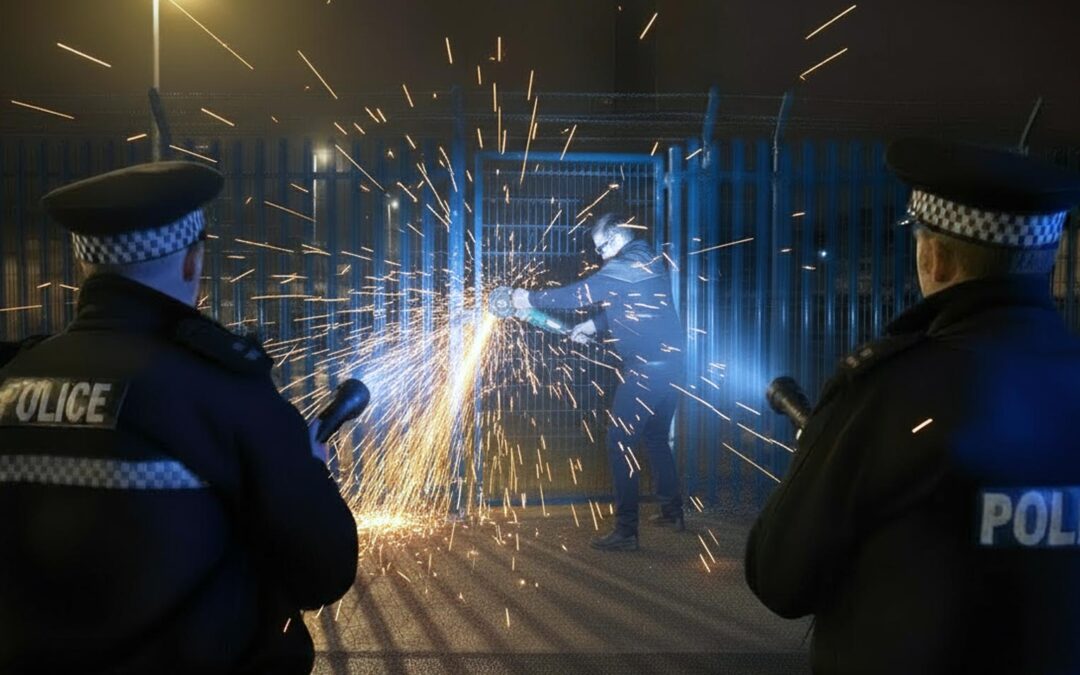The UK Government’s 2025 new Policing Bill introduces “New Powers of Entry” to search for stolen goods when tracking technology shows they are inside private buildings. But are these truly new powers, or is the UK government simply raising awareness about the police powers of entry already available under Section 17 of the Police and Criminal Evidence Act (PACE) 1984? In this blog, we explore the details of the new rules and how they could further help Automatrics theft recovery operations.
How the New Bill Covers Theft Recovery Tracking
The new Crime and Policing Bill amends the Theft Act 1968, introducing a new power for the police to enter and search premises where items have been electronically geolocation-tracked. This is when items are reasonably believed to be stolen and are located on those premises, and it is not practicable to obtain a warrant from a court. Once on the premises, police will have the authority to seize stolen items and evidence of theft offences to prevent further damage or disappearance. Currently, the police have no general power to enter and search premises solely for the purpose of recovering stolen goods without a warrant. They must apply for a court warrant under Section 8 of PACE or Section 26 of the Theft Act 1968. The new power aims to facilitate swift action, allowing officers to take immediate steps to recover stolen property, providing a better service to crime victims and creating a deterrent effect on criminals.
This new power will require authorisation from an officer of at least Inspector rank and will be subject to the safeguards outlined in PACE Code B (covering the police’s exercise of entry, search, and seizure powers). The electronic geolocation tracking required by the new bill will include tracking via GPS, RF, Wi-Fi, Bluetooth, or cellular mobile network technology.
How Automatrics Managed Theft Recovery Before the New Bill
Since 2008, Automatrics has been a leader in theft recovery, working closely with law enforcement. Automatrics’ tracking devices use GPS, cellular, and RF location technology to pinpoint stolen assets with an accuracy of less than one metre. This multi-layered approach is especially valuable for locating assets in areas where GPS signals are blocked or obstructed, such as behind walls, inside buildings, or in underground car parks. Automatrics MTrack devices provide additional location evidence via RF technology, allowing our team and RF-equipped police teams to pinpoint stolen assets, even when they are hidden inside private property. When RF signals are detected on private land or buildings, our finder agents must suspend the operation to request police attendance.
Once the operation is underway, Automatrics communicates with the local police operations control room. We inform them of the situation and highlight our CPI Police Secured by Design certified status, which helps build credibility and increases the chances of a swift police response. We also use our established relationship with law enforcement to encourage quicker officer deployment, improving the success rate of recovery and potential arrest opportunities. Depending on the attending officers’ experience and knowledge, recovery operations can proceed faster or slower. In many cases, if the property is locked or requires forced entry, the officer will need to assess whether there is enough evidence to justify entering without a warrant.
How the New Bill Will Help Automatrics and Their Customers
While Automatrics has enjoyed success in theft recovery operations, there have been instances where recovery efforts were delayed due to inexperienced officers unfamiliar with their powers under Section 17 of PACE. These delays often arise when there’s substantial evidence to suggest stolen goods are on the premises and at risk of damage, but officers hesitate or are unaware of the power of entry available. The new Policing Bill, although similar to Section 17 of PACE, is expected to make these powers better recognised and more widely used by officers. As police forces across the UK become more familiar with the new rules, faster entry authorisations should be the result, leading to quicker asset recovery with less property damage and higher arrest opportunities. Additionally, the new bill could also enhance deterrence for criminals by making it clear that the police can act faster to seize stolen goods, even in private locations. This is particularly beneficial for businesses and individual owners of Automatrics-protected assets, as it means less time waiting for a warrant, reducing the risk of the asset being dismantled or further damaged.
Conclusion
The introduction of the UK’s new Policing Bill 2025 is a significant step forward in the theft recovery process, particularly for Automatrics and other asset protection services. The bill’s new powers of entry will streamline the process of recovering stolen goods, helping both Automatrics and law enforcement officers act more efficiently to prevent damage and catch perpetrators in the act. While the law already offers powers under Section 17 of PACE, this new bill brings greater awareness and consistency, which we believe will greatly benefit the theft recovery operations we’ve been conducting with law enforcement since 2008. With better coordination and quicker action, Automatrics will be even more effective in protecting its customers’ assets and reducing the devastating impact of theft.
